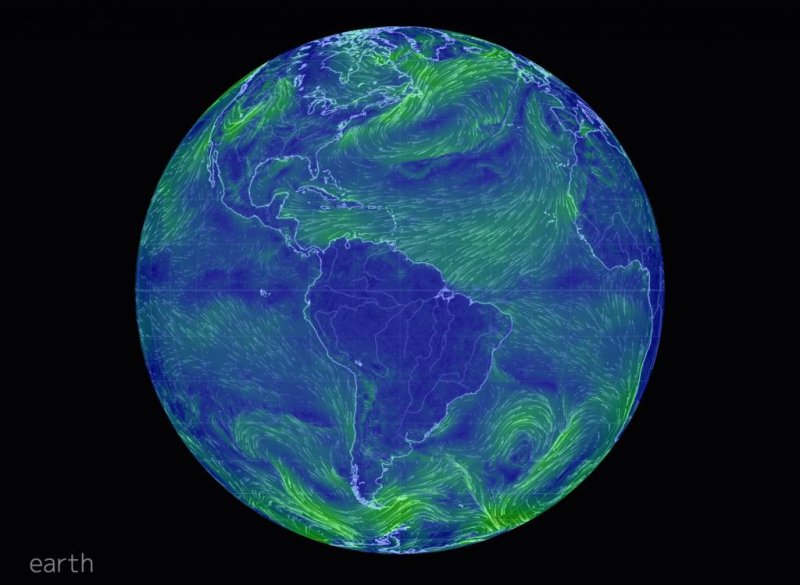The Earth Wind Map, an animated map of global weather conditions according to data from the U.S. National Weather Service's Global Forecast System, can be viewed at
earth.nullscholl.net.
PRINCETON, N.J., April 14 (UPI) -- The climate is warming. Temperatures have been rising significantly over the last half-century. But over the last 15 to 20 years, temperatures haven't been rising as fast as climate models suggest they should have. Scientists have been calling the discrepancy "the slowdown."
New research by climatologists at the National Oceanic and Atmospheric Administraion claims to offer a definitive explanation for the so-called slowdown. According to a new study, published this week in the Journal of Climate, strong trade winds have been pushing heat deep into the Pacific Ocean.
A group of scientists led by Tom Delworth, a climate modeler at NOAA's Geophysical Fluid Dynamics Laboratory in Princeton, N.J., say strong winds blowing east to west across the Pacific Ocean have pushed accumulating heat into the ocean, causing increased upwelling of cold water near the coast of the western United States.
Delworth and his colleagues say cold water has slowed warming, and is also responsible for the prolonged droughts that have plagued much of the West over the last two decades. The cold water buffer zone formed along the coast has served as a blockade to moisture-filled weather systems, pushing most large storms northward toward Canada.
A similar study, published this week in the journal Nature Climate Change, also blames the Pacific Ocean for the slowdown -- citing a phenomenon known as the Pacific Decadal Oscillation or Interdecadal Pacific Oscillation (PDO or IPO, for short). IPO is an established pattern of ocean-atmosphere climate variability, which over the last 15 years has remained in its negative (or cold) phase. Scientists warn that if history repeats itself, and the IPO switches back to its warm phase (as is expected in the next several years), global warming could kick into high gear.
"During a cold or negative PDO/IPO phase, the tropical Pacific remains in relative cold condition while the central North Pacific is warm," Aiguo Dai, atmospheric scientist at the University at Albany and author of the new study in Nature, told The Washington Post. "But the global-mean temperature tends to be lower during the negative phase, as shown in our study. Because of this, phase changes of the PDO/IPO have implications for the global warming rate."
Like Delworth's work, Dai's models pinpoint the tropical Pacific as the main heat sink -- pushing cold water to the top, while the North Pacific's surface water and atmosphere has remained unusually warm.
While most scientists agree that some sort of ocean-climate pattern is responsible for the slowdown, not everyone is in agreement on which pattern -- or which ocean.
"It's the ocean hiding the heat, which would normally warm the surface," Ka-Kit Tung, a climate modeler at the University of Washington, told Climate Central. "The question is which ocean and this paper is not fully answering that question."
Tung thinks the Atlantic Ocean may be holding much of the missing heat -- which most scientists agree will re-emerge in the coming decades.
Delworth acknowledges that such a scenario is possible, but identifying exactly how the Atlantic is influencing Pacific trade winds or the IPO will take a lot more research.















